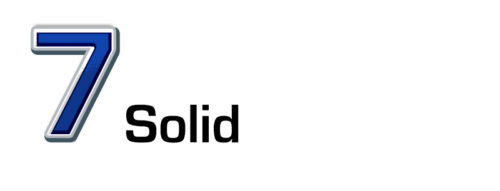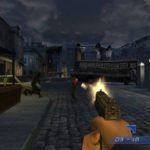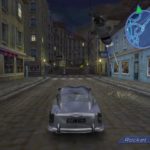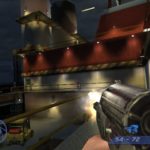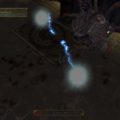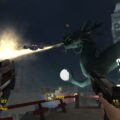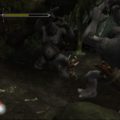Developer: Electronic Arts Publisher: Electronic Arts Released: 11/13/01, 03/12/02 Genre: FPS
Electronic Arts first forays into the Bond license were not all that well received. Tomorrow Never Dies and the PS One version of the World is Not Enough were simply not good games. So you can imagine expectations were not high for their original follow-up. James Bond 007: Agent Under Fire would surprise everyone by being a solid title overall that captured the essence of the movie’s despite being a wholly original creation. It is a bit derivative but still entertaining on a good afternoon.
The single player campaign follows Bond as he attempts to unravel an international conspiracy to replace the world’s leaders with clones. While the story is a bit generic it nails the feel of a Bond flick and has all the requisite ingredients. There are cool gadgets, a load of weapons, and of course women in distress. If there is any one flaw it is that the game plays it a bit safe. The difficulty falls on the easy side and it can’t help but herd you in the correct direction. That isn’t too much of a negative as I still enjoyed it very much.
As you would expect Bond comes loaded for bear with a laundry list of weapons. On top of weaponry Q will furnish you with various gadgets necessary in each mission. Of these the Q-Claw, laser, and decryptor see the most use. Others like the Q-Jet and Q-Remote are highly situational and optional. While you can certainly go in guns blasting there is a stealth component, although it isn’t as pronounced as in Goldeneye. The use of the Q gadgets helps break up what would be an otherwise stale game by helping to access alternate routes and hidden items. The mission objectives are never too complex and evolve over time but I miss some of the nuance Rare infused Goldeneye with.
While the shooting gameplay is solid the greatest strength of Agent Under Fire is its variety. Although it is primarily a first person shooter that component only makes up a third of the game. The rest of the action is comprised of various rail shooting segments and vehicle based gameplay. Usually titles that blend multiple genres lose focus and are poorer for it. Here EA have done an exceptional job creating additions that not only fit but are a welcome diversion from the main gameplay. The driving missions especially are incredible; they would fit right in a Need for Speed game.
The game doesn’t completely follow the Goldeneye template of offering more mission objectives on higher difficulty levels but does have plenty of unlockables. All missions are scored on a number of factors such as time, accuracy, damage taken, etc. with varying ranks awarded based on points. These go up to Platinum and unlock various extra content in both single and multiplayer. The rewards are extensive such as the one hit kill golden gun, gold armor, and plenty of multiplayer skins. It’s strong incentive to replay every mission but most of all fun to see how you can improve your performance. Higher difficulty levels provide point bonuses to make earning medals easier to incentivize the higher challenge. I am usually not one for replaying games on higher difficulty levels but here it actually feels worth it.
Possibly the most important question is how is the multiplayer. The answer: decent but nothing to write home about. While the comparisons to Goldeneye are unavoidable the truth is even when compared to other titles Agent Under Fire simply does not have as many options, at least initially. To get the most out of it you will need to really dig into the campaign to unlock more features. That being said it is still incredibly fun, especially with the high frame rate. The GameCube and Xbox versions have one addition over their PS2 counterpart. Matches can be played with bots but sadly they take the place of other players. It would have been extremely cool if it was in addition to four players as in Perfect Dark. What a wasted opportunity.
For a 2002 game Agent Under Fire matched up pretty well against other releases. The game mostly benefits from its smooth 60 fps which rarely ever drops. The frequent vehicle based segments benefit the most; it’s more stable than most racing games embarrassingly. This isn’t the most chaotic game which is probably why the frame rate is so stable. Thanks to its jet setting story locations are varied and at times picturesque. Being a late port the GameCube version is an improvement over the PS2 game with better textures and reflections on select surfaces. That being said it isn’t pushing the system at all, as Metroid Prime, released the same year will attest.
In Closing
Electronic Arts had tough shoes to fill coming after Goldeneye. Agent Under Fire does not match up to that legendary title but is a clear improvement over The World is Not Enough. The campaign is a decent Bond romp and the multiplayer is fun in short bursts. A nice start and they would continually improve from here.
